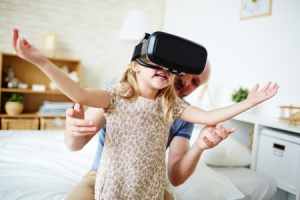Amidst all the hype and wide-eyed growth predicted for virtual reality, it’s often difficult for stakeholders to decide which of its two words to focus on. Will VR deliver only indirect, ‘virtual’ benefits to in the engineering industry or direct, tangible benefits that become a bottom-line reality? On this topic, today’s hype will definitely become tomorrow’s given.
Even in these earliest days, VR is already a game changer, and the future holds immense promise for almost every engineering vertical including the electrical, mechanical, and even petroleum engineering spaces, says Joseph Zulick manager at MRO Electric and Supply.
VR might utilise complex technologies, but its innovation is easy to grasp. Simply put, VR is a logical, next-step evolution in our ability to communicate with each other and with groups. Five thousand years ago, literacy made our thoughts portable.
Almost a century ago, the first talking movie made experiences portable. Thanks to technological progress, VR now let us create and easily distribute new, richer experiences that go beyond the time and space limitations of media. Every engineering company that needs to convey something – to a client, a trainee, an audience – will benefit from the VR paradigm shift.
Beyond sight and sound
Through VR, perceptual experiences can now take place in three dimensions; a major evolution in and of itself. This benefit is already in growing use throughout the engineering and manufacturing industries, where prospective clients can walk through environments and properties to make informed visiting or purchase decisions.
For example, those in the engineering space likely use computer aided drafting (CAD) as a tool to help their ideas come into fruition; imagine if those professionals were able to actually interact and communicate with their CAD masterpieces. They would be able to fine-tune their projects by not only taking their colleagues input into consideration, but the actual project’s input as well.
Thus, if engineering professionals were able to intimately interact with their CAD projects in a transparent manner, productivity would increase while start-to-finish timelines would decrease, resulting in optimised efficiency.
VR also moves us beyond the limitations of the two senses used in communications: sight and sound. By way of hardware peripherals, VR experiences will include tactile and other sensory information to further emulate physical reality. If seeing is believing, what is touching worth? Customers will be able to feel the material before they buy that suit or curtain.
Doctors will learn to feel a micro-fracture that an X-ray might miss. Wearables will produce and extract additional sensations for and from the user. This, in turn, will generate valuable, real-time feedback to the content provider. In the near future, marketers will have their hands on the pulse. Literally.
Multiple paths to the right message
More than any existing media, VR can provide an experience that’s genuinely interactive, and able to switch the narrative flow in real time. The user, the author, the publisher, and even the audience can all influence activity to a directed outcome, whether it’s a an informed trainee, a successful sale or a storybook happy ending.

The gaming industry has long been pioneering these open-narrative experiences through ‘quests’ where the user determines the action, and also through networked games, where multiple participants can affect actions and outcome.
Transposing gaming into the business world, a quest is similar to any transaction or negotiation. The action involves the presentation of persuasive information (such as a proposition or product demo) by one party, while the other decides whether the choice is compelling. If so, deeper interest is expressed and deeper content invoked.
If not, alternative content is delivered or selected. While this is happening, a third-party distributor of the content might be deciding, through AI and selective data, which content to serve to which user in real time. An outside audience, such as a focus group or other customers, could steer the details and outcome. VR does away with the one-sidedness of linear experiences like video.
Liberation from place
What if there were a Skype for physical presence? Short of the matter transporter that Trekkies dream about, VR will be our closest answer. What if you could invite thousands to a physical venue that only held a dozen? What if a company’s best global talent could interact on the same project in real time without travel? What if companies could train new employees through real world simulations, rather than procedure manuals and explainer videos?
The immersive aspect of VR makes all this possible. Today’s teleconferencing will pale in comparison to VR’s shared group experiences, where one-to-one can take place at the same time as one-to-many. Our most acute human assets will re-emerge through this technology.
Physical cues like eye contact and body language will matter again. Who’s paying attention and who’s not will be obvious once more. Naturally, this will all be captured as data. Which industries will benefit from VR? All of them, once the technology becomes more adept, standardised and accessible. In these early days, sentiment is still mixed.
According to the Consumer Technology Association, users have trouble finding the content they want, and without it, headset usage – and interest – declines. Once in full motion though, VR will be a complete game-changer, and not only for business enterprise but for the human enterprise.
The writer and editor of this blog is Joseph Zulick manager at MRO Electric and Supply.
Comment on this article below or via Twitter: @IoTNow_OR @jcIoTnow










